
Constructing an investment where an investor gets the same upside while the program limits the downside.
- Subject:
- Business and Marketing Education
- Finance
- Material Type:
- Lesson
- Provider:
- Khan Academy
- Author:
- Sal Khan
- Date Added:
- 09/22/2013

Constructing an investment where an investor gets the same upside while the program limits the downside.
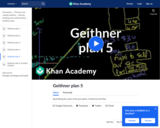
Quantifying the value of the put option

Generalizing a linear consumption function as a function of aggregate income

We often face investment decisions, whether in our personal lives or our jobs. Investment projects involve payments at different times in a project's life. Capital costs are usually paid at early stages, but revenue is generated in the future. Time affects the value of money, and these values can't be compared directly. In EME 460, Geo-Resources Evaluation and Investment Analysis, we will learn methods to evaluate investment projects. The objective of the course is to ensure students learn the techniques used in geo-resource project evaluation, cash flow, net present value, and rate of return analysis; benefit cost ratio and payback period; interest rate and break even calculations; tax considerations, mutually exclusive projects evaluation, uncertainty and risks, depreciation, and loan calculations.

In GEOG 871, we'll take a critical look at geospatial project management. Project management is a broad discipline that encompasses technical methods such as system design and analysis and also interpersonal factors that affect professional relationships. Project management is also a discipline that has matured outside of, but can be incorporated into, geospatial technology. By the end of this course, you'll have devised a project plan from a scenario built upon a real-life project involving the city of Metropolis geodatabase. We'll work through each of the components in an organized and logical manner and will incorporate constructive peer review to help everyone achieve the best product possible.

Series A funding from a seed venture capitalist.

Global Finance for the Earth, Energy, and Materials Industry covers the physical and financial aspects of energy commodities with the focus on crude and natural gas. The physical \path\" of each commodity from the point of production to the point of use will be explained, as well as the \"value chain\" that exists for each. Commodity market pricing, both cash and financial, will be presented, encompassing industry \"postings\" for cash, commodity exchanges, and \"over-the-counter\" markets. The use of financial derivatives to reduce market price risk (\"hedging\") will be presented, and \"real world\" examples will be utilized. Students will learn and practice the trading strategies in the energy commodity financial markets."
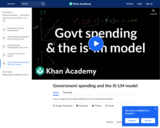
How a change in fiscal policy shifts the IS curve
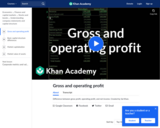
Difference between gross profit, operating profit, and net income.

Understanding how hedge funds are structured and how the managers get paid

Overview of how hedge funds are different than mutual funds
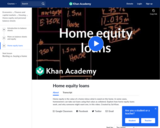
Simple example of borrowing from equity to fuel consumption

Thinking about how many people it makes sense to hire. Brief discussion of a monopsony.

Why are there stocks at all? Everyday in the news we hear about the stock exchange, stocks and money moving around the globe. Still, a lot of people don't have an idea why we have stock markets at all, because the topic is usually very dry. We made a short video about the basics of the stock exchanges. The video "How The Stock Exchange Works (For Dummies)" is a resource included in the Finance topic made available from the Kurzgesagt open educational resource series.
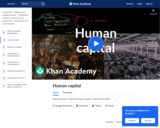
Basic overview of capital and human capital

Basic of hyperinflation. Weimar Germany, Hungarian Pengo and Zibabwean Dollar
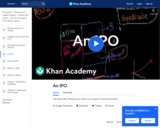
The initial public offering of our online sock company.

This video is from the Khan Academy subject of Economics and Finance on the topic of Finance and capital markets and it covers Implied volatility.
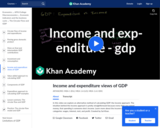
Looking at a simple model of an economy

Why the opportunity cost may increase as you pursue more rabbits